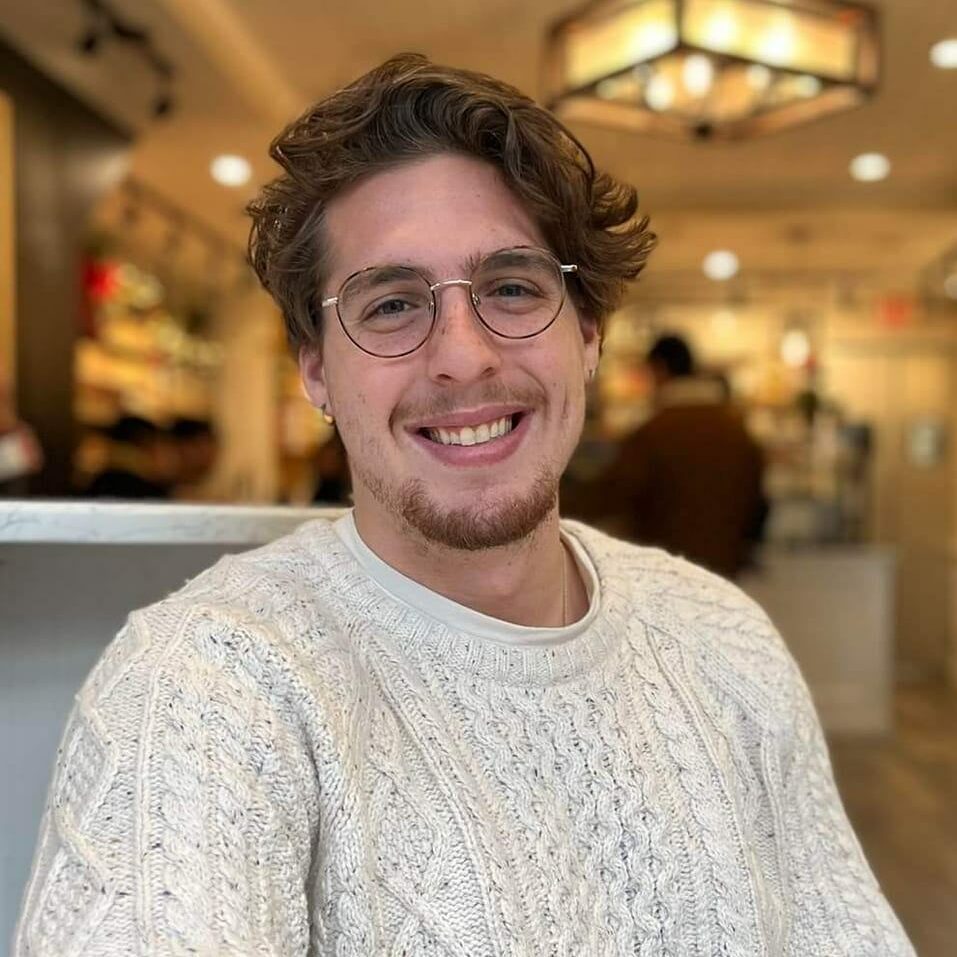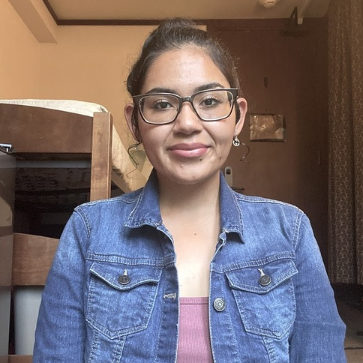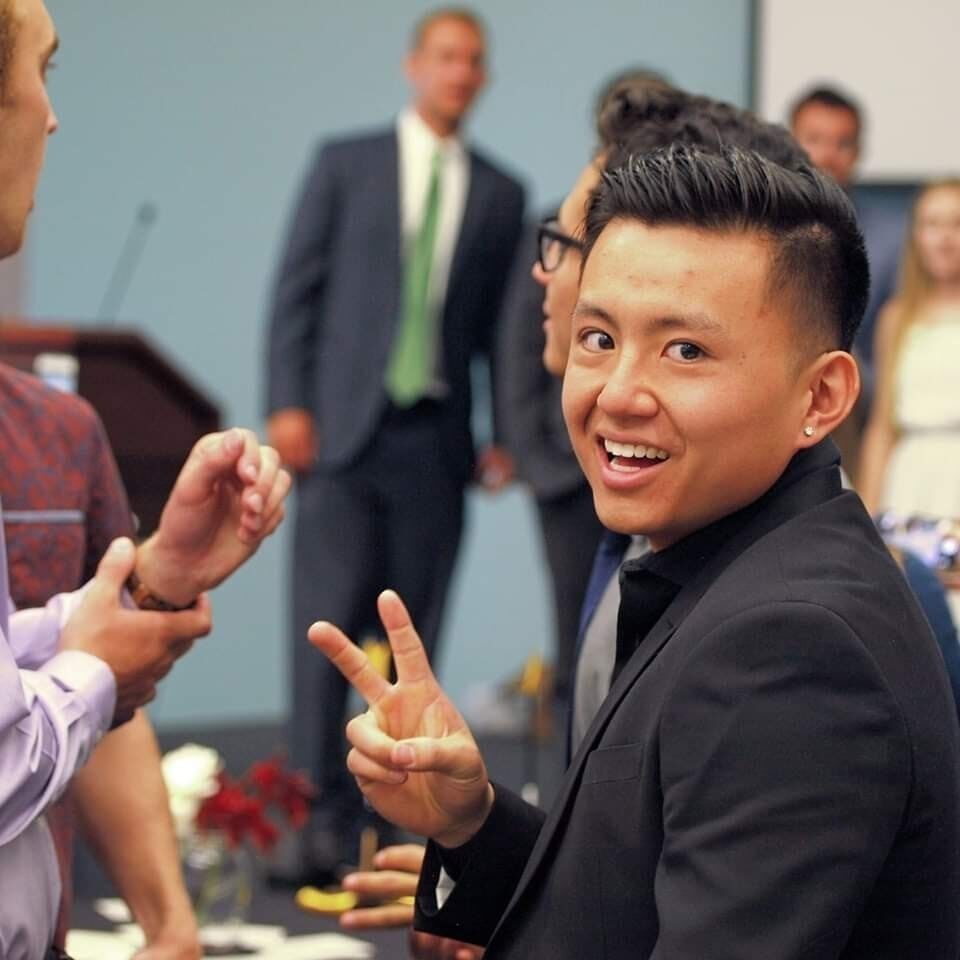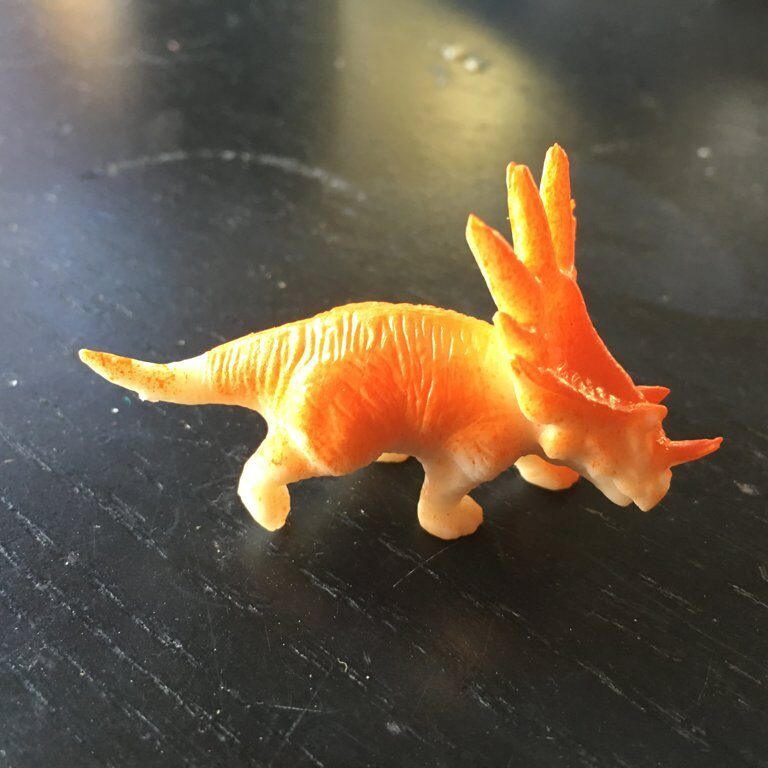we herd living cells like sheep using
biomaterial- and bioelectric sheepdogs
The Work
Cells in tissues behave as communities with similarities to flocks of birds, human cities, and herds of sheep. This means that many of the tools we use to engineer communities, from urban planning to sheep herding can be applied to living tissues!
In the Cohen Lab, we study these cellular collective and communal behaviors to better: (1) understand; (2) heal; and (3) grow tissues.
In particular, we build bioelectric sheepdogs and
materials that mimic cells, and we study the
social lives of cells within tissues.
The Crew

Isaac Breinyn (EYE-zuhk BREY-nin | he/him | ibreinyn@princeton.edu)
A 5th year Ph.D. student in Quantitative and Computational Biology, Isaac completed his undergraduate degree in Physics at the University of California, Santa Barbara where he researched the morphogenetic process of the drosophila midgut. He is interested in how electric fields interact with healing wounds and developing organs through the manipulation of their mechanics and their constitutive cell population's collective behaviors.
Isaac grew up in sunny San Ramon, California and while not in lab, can be found playing videogames, producing not-so-musical music, and picking heavy objects up before putting them back down. During the work day, find him at the laser cutter, coding at his desk, or watching dry ice sublimate in the sink.

Yubin Lin (yubinlin@princeton.edu| he/him/his)
is a second-year Ph.D. student in Electrical and Computer Engineering. He received a B.S. degree in Electrical Engineering from the University of Southern California. During his undergrad years, Yubin was involved in an in-body localization system using magnetic field gradient and has a few publications on BioCAS. He is interested in mixed-signal electronics systems for high-throughput stimulation and tissue sensing integration.
During lab hours, you can find Yubin soldering and prototyping circuits in his EE land. In his free time, Yubin likes to play guitar and shoot landscape photos. He is also an amateur radio operator and currently learning towards a private pilot license.

Celeste Rodriguez (she/her | cr5428@princeton.edu)
is a second-year Ph.D. student in Molecular biology. She grew up in the wonderful desert city of Reno, Nevada where she completed her undergraduate degree in Biochemistry and Molecular biology at the University of Nevada, Reno. There she studied plant cell walls, root hairs, and post-translational modifications. She then did a post-baccalaureate at Brown University looking at how phosphatases play a role in plant development. Now, at Princeton, she is interested in looking at the transcriptional changes in electrotaxing cells under various electrical fields and conditions.
In the lab, you can find her in the TC hood, overly caffeinated and talking to her cells ... again. Outside of the lab, she can be found reading books, exploring new Mexican restaurants to try, hanging out with friends, and playing board games.

Chongxu Qiu (cq9531@princeton.edu)
is a second-year Ph.D. student in Molecular Biology. He received a B.S. and
M.S. degree in Molecular, Cellular, and Developmental Biology from the
University of California, Santa Barbara During his undergrad, Chong studied a
variety of processes involved in early human development from modeling
signaling dynamics to large scale drug screens focused on identifying unknown
teratogens. At Princeton, he is interested in exploring the effects of electrical
fields on immune cell behavior and stem cell related tissue engineering.
While in the lab, you can find Chong grumbling about how annoying stem cells
are to handle or consuming vast amounts of green tea. In his free time, Chong
likes to play video games or occupy himself with a variety of sport activities
ranging from basketball to tennis


Kevin Suh (ksuh@princeton.edu)
Is a recently graduated PhD student in Chemical and Biological Engineering. He grew up in Tucson, Incheon, Seoul, and now New Jersey. He completed his undergraduate degree in Chemical and Biological Engineering at the Seoul National University. His undergraduate research was focused on the synthesis of temperature-responsive hydrogel for drug delivery. Now, in Cohen lab, he is interested in biophysics in tissue behavior and bio-inspired materials. He is quite interested in stem cell stuff too.
In the lab, you can find him behind the cool guy named Irving. Outside of the lab, he is a mad indoor climber
Graduate and Post-doc Survivors
- Dr. Lisset Duran Rosario (staff scientist, IFF, Inc.)
- Dr. Elena Cho (staff scientist, oddity.ai)
- Dr. Gawoon Shim (Marie-Curie Postdoctoral Fellow, U. Utrecht, The Netherlands)
- Dr. Abraham Wolf (Consulting)
- Dr. Matthew Heinrich (Moderna)
- Dr. Julienne LaChance (Sony AI)
- Dr. Tom Zajdel (Faculty, Carnegie-Mellon)
The Papers
Shim*/Breinyn IB*, Martinez-Calvo A, Sameeksha, and Cohen DJ. Bioelectric stimulation controls tissue shape and size. Nature Communications (2024)
- We applied DC electric fields to engineered kidneyoids and intestinal gut organoids and observed amazingly strong 'inflation' of the tissues as they increased water pumping into their interiors (kind of like inflating a tissue balloon). We also found that the same electrical cues caused the tissues to break symmetry and thin on one side and thicken on the other. The two combined effects allow control over the size, pressure, and shape of 3D engineered tissues and emphasize the importance of water transport and pumping in regulating tissue growth and engineering.
Suh K*/Cho E*, Breinyn IB, and Cohen DJ. E-cadherin biomaterials reprogram collective cell migration and cell-cycling by forcing homeostatic condtions. Cell Reports (2024)
- We created special biomaterial 'carpets' for tissues to grow on, but in this case the carpet biomaterial material was made out of the same protein that cells use to recognize and 'hold hands' with other cells (cadherins). This completely reprogrammed how large groups of cells grew and behaved as a collective group. This has exciting implications for future biomaterials and implants that might better integrate with the body.
Heinrich MA*, Alert R*, Wolf A, Kosmrlj A,and Cohen DJ. Self-assembly of tessellated tissue sheets by growth and collision, Nature Communications (2022)
- We made M.C. Escher-style tessellations of living tissues that filled entire Petri dishes and look beautiful. Check it out!
LaChance JM, Suh K, Clausen J, and Cohen DJ. Learning rules of collective cell migration using deep attention networks. PLoS Comp Bio (2022)
- We used a ChatGPT-style process to analyze swarming videos of thousands of cells to 'learn the rules' of how they interact as groups. Like ChatGPT predicts the next word in a sentence, our network predicts how each cell in a group will move at the next step and learns from this the 'crowd rules' Check it out!
Wolf A, Heinrich MA*, Breinyn I*, Zajdel TJ,and Cohen DJ. Short-term stimulation of collective cell migration induces long-term, supracellular changes to tissue behavior, PNAS Nexus (2022)
- We've done a lot of work to show how bioelectric cues can be used to literally steer cells in tissues around for healing and growth control, but a hole in the field has been understanding how different members within a group respond to the same field, and how well they remember having been electrically stimulated even after the electrical cue is turned off. Here, we showed that the same electrical stimulus applied to a whole tissue can lead to cells doing different things depending on where they are within a tissue! We also proved that tissues remember having been stimulated for many hours after even a short period of electrical stimulation. These concepts will help us to better optimize and design next-gen bioelectric tools.
Shim G, Devenport DD, and Cohen DJ. Overriding endogenous coordination makes cell migration more susceptible to external control, PNAS (2021)
- We've been working on using bioelectric signals that mimic those that naturally occur in the body to help accelerate tissue growth and injury healing. However, we found a unique complication arises when the natural behaviors of a tissue conflict with our bioelectric command. In these cases, we found that combining bioelectricity with drugs that gently disrupt 'cell handholding' makes cells obey our commands more effectively, allowing us to accelerate model skin healing.
Nirody J, Rosario LD, Johnston D, and Cohen DJ. Tardigrades exhibit robust interlimb coordination across walking speeds, PNAS (2021)
- Waterbears may be the smallest animal with legs (8 legs total!), which makes them a really important example of what is possible at such a tiny scale (1.5X human hair thickness). We found that waterbears use a variety of clever tricks to walk at the microscale, and we also found that they use a very simple, but powerful, neural control pattern to program their 8 legs. This could help understand both the evolution of walking and the design of microscale walking robots.
Zajdel TJ, Shim G, and Cohen DJ. Come together: Bioelectric ’healing-on-a-chip’ to accelerate tissue healing, Biosensors and Bioelectronics (2021)
- Bioelectric fields pop up immediately upon receiving a skin injury. These signals act like navigational cues that help activate healing processes and tell cells where to go during healing. We built a device that mimics the shape of these fields, but amplifies the electric field strength to accelerate healing and tested it in simple skin layers cultured in a Petri dish.
Hart KC, Sim JY, Hopcroft MA, Cohen DJ, Tan J, Nelson WJ, and Pruitt BL. An Easy-to-Fabricate Cell Stretcher Reveals Density-Dependent Mechanical Regulation of Collective Cell Movements in Epithelia, Cellular and Molecular Bioengineering (2021)
- We helped to analyze how a 3D-printable cell stretching device applies mechanical strain to living tissues and how the induced strain drives changes to collective cell migration.
Zajdel, TJ., Shim G, Wang L, Rossello M, and Cohen DJ. SCHEEPDOG: Programming Electric Cues to Herd Cell Migration, Cell Systems (2020)
- Bioelectric signals permeate the body, entirely separate from the nervous system! These signals come from ionic currents and play an important role in telling cells where to move. We built a multi-electrode system that hacks these natural fields and allows us to completely program cellular motion in 2D, kind of like a cellular 'etch-a-sketch'! This approach can be useful for tissue engineering and healing injuries.
Heinrich MA, Alert R, LaChance J, Zajdel TJ, Kosmrlj A, and Cohen DJ. Size-dependent patterns of cell proliferation and migration in freely-expanding epithelia, eLife (2020)
- For a tissue to change shape or grow during development or healing requires thousands of cells to decide whether to move or divide to make new cells. This coordination is quite complicated and and we demonstrate here how the size of a tissue can lead to unique behavioral 'zones' across the tissue that affect growth and healing.
Bisaria A, Hayer A, Garbett D, Cohen DJ, and Meyer T. Membrane-proximal F-actin restricts local membrane protrusions and directs cell migration, Science (2020)
- We collaborated with the Meyer Lab here to make single cell-wide 'highways' that make it much easier to study subcellular, migratory dynamics since the cells can only move forward or backwards. These tools helped to reveal how spatiotemporal activation of molecular motors can organize cell migraton.
LaChance JM and Cohen DJ. Practical Fluorescence Reconstruction Microscopy for Large Samples and Low-Magnification Imaging, PLoS Comp. Bio. (2020)
- While fluorescence microscopy is very powerful, the act of observing cells and microorganisms using fluorescence excitation often changes their behaviors due to light-induced toxicity and chemistry. There is also a trade-off between seeing more of a sample (lower magnification) and high-quality fluoresence imaging. Here, we used machine learning approaches to take non-toxic, gentle transmitted light images (non-fluorescent) and predict what the equivalent fluorescent images would look like for many common cell markers. Give it a shot!
Cohen DJ, Nelson WJ. Secret Handshakes: cell-cell recognition and adhesion, Current Opinion in Cell Biology (2018)
Cohen DJ, Gloerich M, Nelson WJ. Epithelial self-healing is recapitulated by a 3D biomimetic E-cadherin junction, PNAS (2016)
Gloerich M, Bianchini JM, Siemers KA, Cohen DJ, Nelson WJ. Cell division orientation is coupled to cell- celladhesion by the E-cadherin/LGN complex, Nature Communications (2016)
Cohen DJ, Nelson WJ, Maharbiz MM. Galvanotactic control of collective cell migration in epithelialmonolayers, Nature Materials (2014)
Cohen DJ, Mitra D, Peterson K, Maharbiz MM. A highly elastic, capacitive strain gauge based onpercolating nanotube networks, Nano Letters (2012)
Libby T, Moore TY, Chang-Siu E, Li D, Cohen DJ, Jusufi A, Full RJ. Tail-assisted pitch control in lizards, robots and dinosaurs, Nature (2012)
Chen J, Bly RA, Saad MM, Alkhodary MA, El-Backly RM, Cohen DJ, Kattamis N, Fatta MM, Moore WA, Arnold CB, Marei MK, Soboyejo WO. In-vivo study of adhesion and bone growth around implanted laser groove/RGD-functionalized Ti-6Al-4V pins in rabbit femurs, Materials Science and Engineering: C (2011)
Cohen DJ, Morfino R, Maharbiz M, A Modified Consumer Inkjet for Spatiotemporal Control of GeneExpression, PLoS ONE (2009)
Pre-prints
Heinrich MA, Alert R, Wolf A, Kosmrlj A,and Cohen DJ. Self-assembly of tessellated tissue sheets by growth and collision, In Press: Nature Communications (2022); avail. bioRxiv (2021)
The News
08/22: Graduate student Yubin Lin of ECE joins the lab. Welcome!
2022: Esme *Moose* Rodal Cohen is born--development of website and social media enters a glacial phase :-).
04/22: Graduate Student Isaac Breinyn wins an NSF GRFP award. Congrats, Isaac!
03/22: Graduate student Celeste Rodgriguez of MOL joins the lab. Welcome!
Pre 01/2022: Lots of important things happened but we need to update this 🙂
The Positions
Graduate Students: We are recruiting for the 2023/2024 academic year. All backgrounds are considered. Current project areas include bioelectronic control of tissue growth and healing; bioelectrochemical material design, cell-mimetic biomaterials; and collective cell behaviors. Please contact the PI directly for further information danielcohen<at>princeton<dot>edu
Post-doctoral fellows: We are looking for 1-2 post-doctoral fellows to join NIH and NSF funded research projects. Project areas are flexible but specific needs are in the areas of bioelectricity and bioelectronic tissue engineerings and biomaterial synthesis and testing.
Please contact the PI directly at danielcohen<at>princeton<dot>edu for specific details. Be sure to include a CV and specific description of your research interests and why you are specifically interested in our group. Inquiries without these materials will not be considered.


